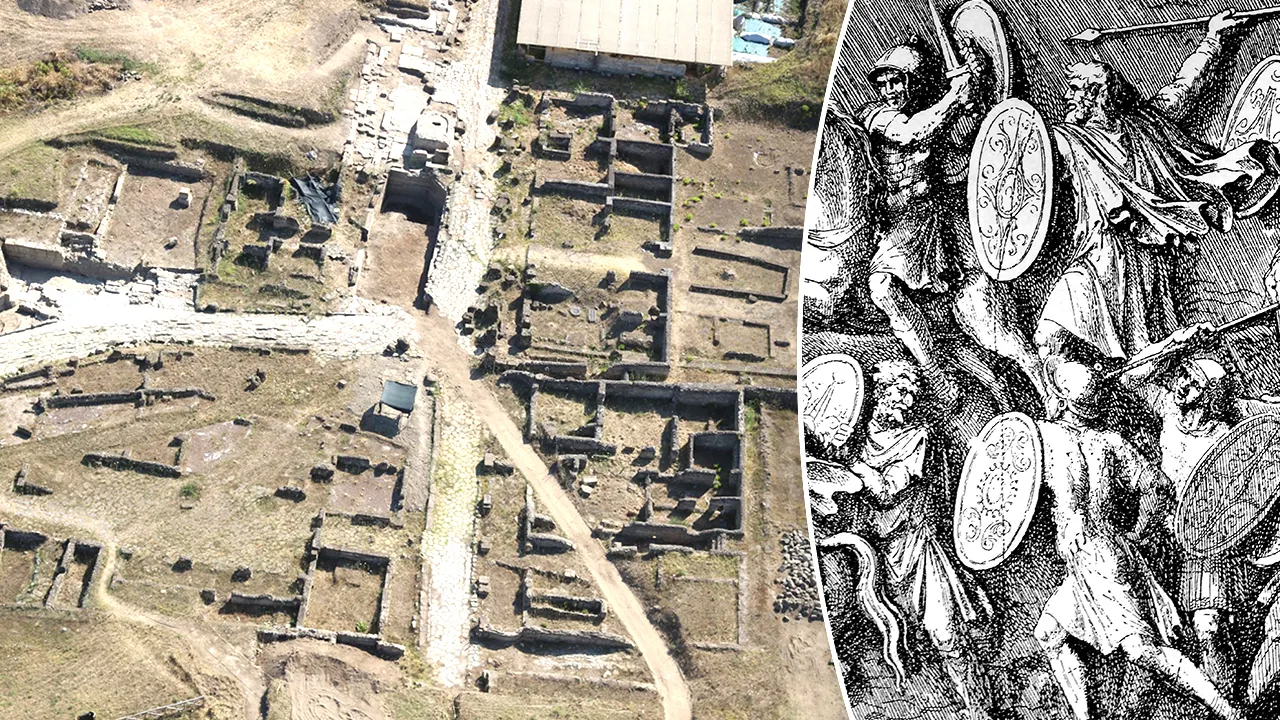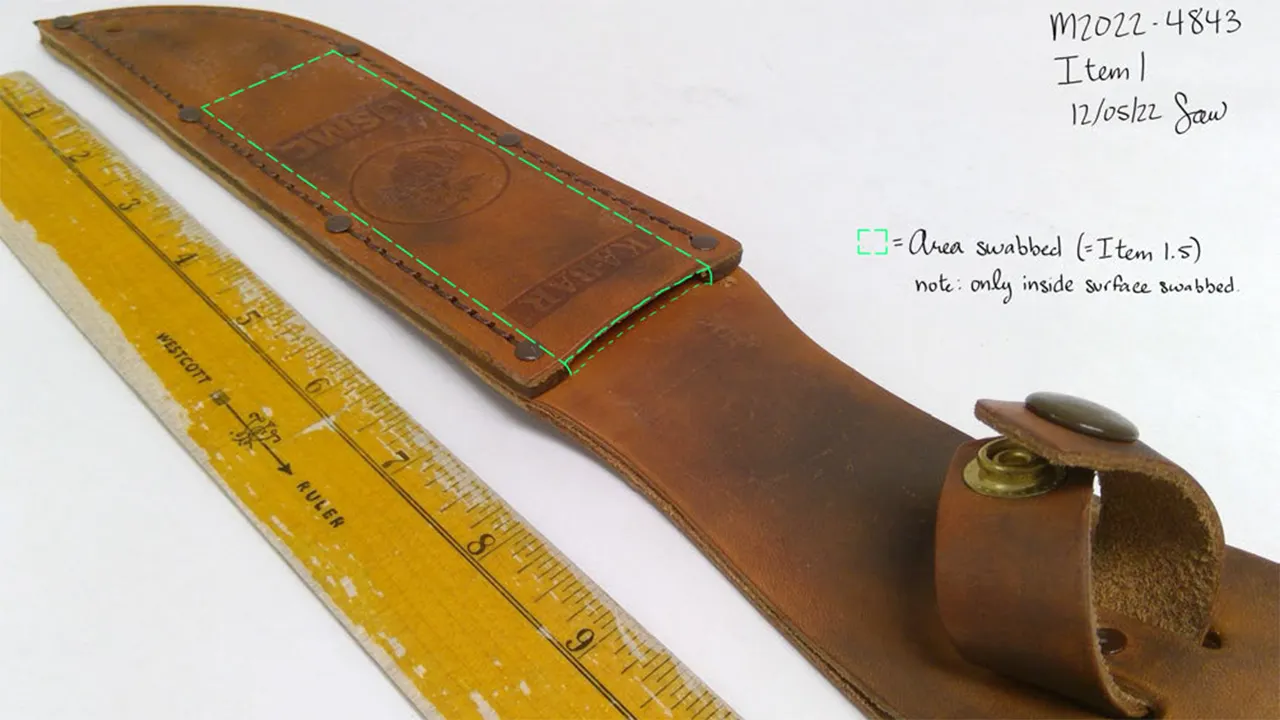Ancient rival of Rome uncovered as 2,000-year-old basin is found in Gabii, Italy
NEWYou can now listen to Fox News articles!
Archaeologists recently found a massive stone basin in Italy dating back more than 2,000 years — remnants of a once-powerful rival of Rome.
The discovery was found in the ancient ruins of Gabii, about 11 miles east of Rome. University of Missouri archaeologists uncovered the remains, according to an Oct. 16 university press release.
Marcello Mogetta, chair of the Department of Classics, Archaeology and Religion, estimated the basin was built around 250 B.C.
ARCHAEOLOGISTS FIND 1,600-YEAR-OLD CHURCHES AND MURAL OF JESUS IN EGYPTIAN DESERT SETTLEMENT
The structure may be one of the earliest examples of large-scale Roman public architecture outside of temples and city walls. It may also demonstrate how Roman architects were influenced by Greeks.
Mogetta told Fox News Digital that Gabii and Rome both “traced their descent from common ancestors.”

Archaeologists in Gabii, Italy, uncovered a massive stone basin dating back more than 2,000 years. (Marcello Mogetta)
“According to some of the stories that circulated in Roman times, Gabii was the place where Romulus and Remus went to learn the liberal arts,” said Mogetta.
“This underscores the close cultural ties, but the actual relationship was more complicated than this.”
“In the long term … the growth of Rome as a metropolis and superpower on the international stage worked against Gabii.”
The two cities had a longstanding rivalry, driven by aristocratic clans and warlords. Mogetta said this likely played out in the form of small-scale raiding parties.
“The last recorded conflict between Rome and Gabii dates to the beginning of the 5th century B.C., during the Latin War, in which the Gabines sided with the Latin states that reorganized their alliances against Roman hegemony,” he said.
CLICK HERE TO SIGN UP FOR OUR LIFESTYLE NEWSLETTER
“The decisive victory of the Romans happened at the battle of Lake Regillus, located on the border of the territory of Gabii.”
The city of Gabii once featured aristocratic residences, city walls, huts, houses, agricultural land and pastures and one temple called the Santuario Orientale.

The discovery has revealed architecture from Gabii, a city that clashed with Rome in the Latin War. A generic Roman battle scene is seen above right. (Marcello Mogetta; Photo 12/Universal Images Group via Getty Images)
The area was occupied for 2,000 years before declining in the first century B.C. Former houses were demolished and repurposed into quarries, graveyards and workshops.
“The lack of a strong municipal elite meant that Gabii relied primarily on investments from the emperors, which faded over time,” said Mogetta. “Initially, the geographical proximity to Rome may have been an advantage, making Gabii uniquely relevant on the map of central Italian city states.”
CLICK HERE FOR MORE LIFESTYLE STORIES
He added, “In the long term, however, the growth of Rome as a metropolis and superpower on the international stage worked against Gabii.”
The territory outside Gabii turned into marshland eventually, Mogetta said, which made it uninhabitable.
“There is evidence that Gabine elite families moved to Rome early on. … It made more sense for other middle-class Gabine inhabitants that didn’t have ancestral ties to Gabii to leave for better opportunities in the burgeoning imperial capital,” he said.

Archaeologists detected an additional “anomaly” near the basin, possibly covering another man-made structure. (Marcello Mogetta; Photo 12/Universal Images Group via Getty Images)
At the site, the excavation team also detected an “anomaly” — possibly an artificial mound — just behind the basin, which may be covering a man-made structure.
TEST YOURSELF WITH OUR LATEST LIFESTYLE QUIZ
Mogetta said that field work in 2026 and 2027 will reveal more of the ruins. The expert told Fox News Digital that the basin was built at a “critical moment” in the 3rd century B.C., when Gabii’s citizens and planners had the means and motivations to create an urban center.
At the time, Rome had become more successful in its conquests and was generating new wealth and ideas that spread to nearby communities like Gabii.

Gabii, once a thriving city-state 11 miles from Rome, was an early rival to the capital. (Marcello Mogetta)
The result was a “comprehensive public building project that transformed the natural geomorphology of the landscape with a blend of local traditions and experimentation with Hellenistic culture,” he said.
CLICK HERE TO GET THE FOX NEWS APP
“The monumental pool we just discovered seems to have determined the spatial and monumental focus of a much larger ensemble that we do not yet see in its entirety,” Mogetta said.
Source link
editor's pick
latest video
Sports News To You
Subscribe to receive daily sports scores, hot takes, and breaking news!




